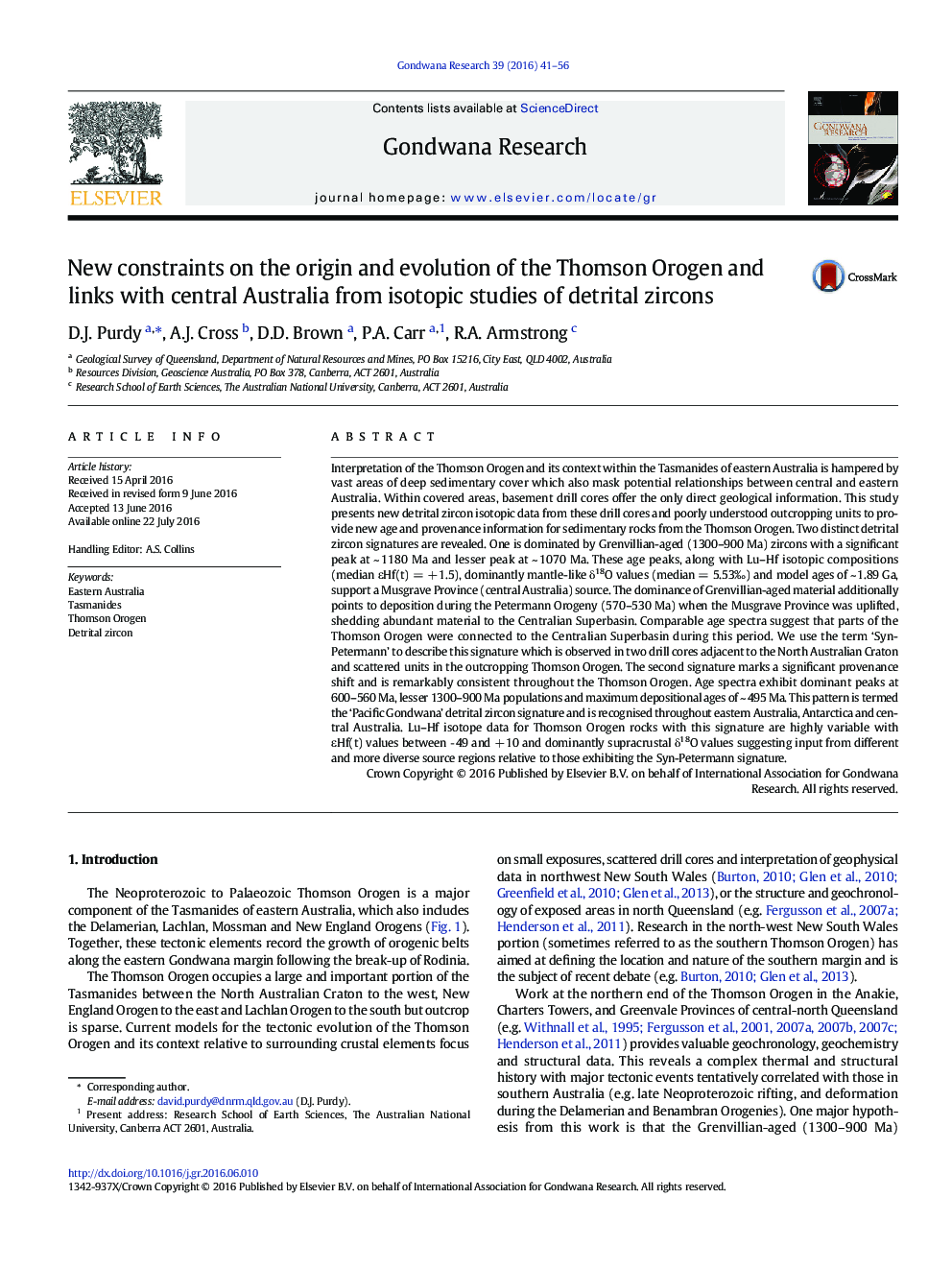| کد مقاله | کد نشریه | سال انتشار | مقاله انگلیسی | نسخه تمام متن |
|---|---|---|---|---|
| 4726561 | 1640132 | 2016 | 16 صفحه PDF | دانلود رایگان |
• Two detrital zircon age, Lu–Hf and O signatures revealed in the Thomson Orogen.
• ‘Syn-Petermann’ signature derived from Musgrave Province during Petermann Orogeny.
• ‘Pacific-Gondwana’ signature associated with widespread extension.
• Pacific-Gondwana facies deepen towards central and eastern Thomson Orogen.
• Connections existed between the Centralian Superbasin and Thomson Orogen.
Interpretation of the Thomson Orogen and its context within the Tasmanides of eastern Australia is hampered by vast areas of deep sedimentary cover which also mask potential relationships between central and eastern Australia. Within covered areas, basement drill cores offer the only direct geological information. This study presents new detrital zircon isotopic data from these drill cores and poorly understood outcropping units to provide new age and provenance information for sedimentary rocks from the Thomson Orogen. Two distinct detrital zircon signatures are revealed. One is dominated by Grenvillian-aged (1300–900 Ma) zircons with a significant peak at ~ 1180 Ma and lesser peak at ~ 1070 Ma. These age peaks, along with Lu–Hf isotopic compositions (median εHf(t) = + 1.5), dominantly mantle-like δ18O values (median = 5.53‰) and model ages of ~ 1.89 Ga, support a Musgrave Province (central Australia) source. The dominance of Grenvillian-aged material additionally points to deposition during the Petermann Orogeny (570–530 Ma) when the Musgrave Province was uplifted, shedding abundant material to the Centralian Superbasin. Comparable age spectra suggest that parts of the Thomson Orogen were connected to the Centralian Superbasin during this period. We use the term ‘Syn-Petermann’ to describe this signature which is observed in two drill cores adjacent to the North Australian Craton and scattered units in the outcropping Thomson Orogen. The second signature marks a significant provenance shift and is remarkably consistent throughout the Thomson Orogen. Age spectra exhibit dominant peaks at 600–560 Ma, lesser 1300–900 Ma populations and maximum depositional ages of ~ 495 Ma. This pattern is termed the ‘Pacific Gondwana’ detrital zircon signature and is recognised throughout eastern Australia, Antarctica and central Australia. Lu–Hf isotope data for Thomson Orogen rocks with this signature are highly variable with εHf(t) values between ‐ 49 and + 10 and dominantly supracrustal δ18O values suggesting input from different and more diverse source regions relative to those exhibiting the Syn-Petermann signature.
Figure optionsDownload as PowerPoint slide
Journal: Gondwana Research - Volume 39, November 2016, Pages 41–56
